Six people who will transform your cycling
Leaving no stone unturned in her quest for racing success, CW’s Michelle Arthurs-Brennan speaks to six paradigm-shifting gurus of performance optimisation
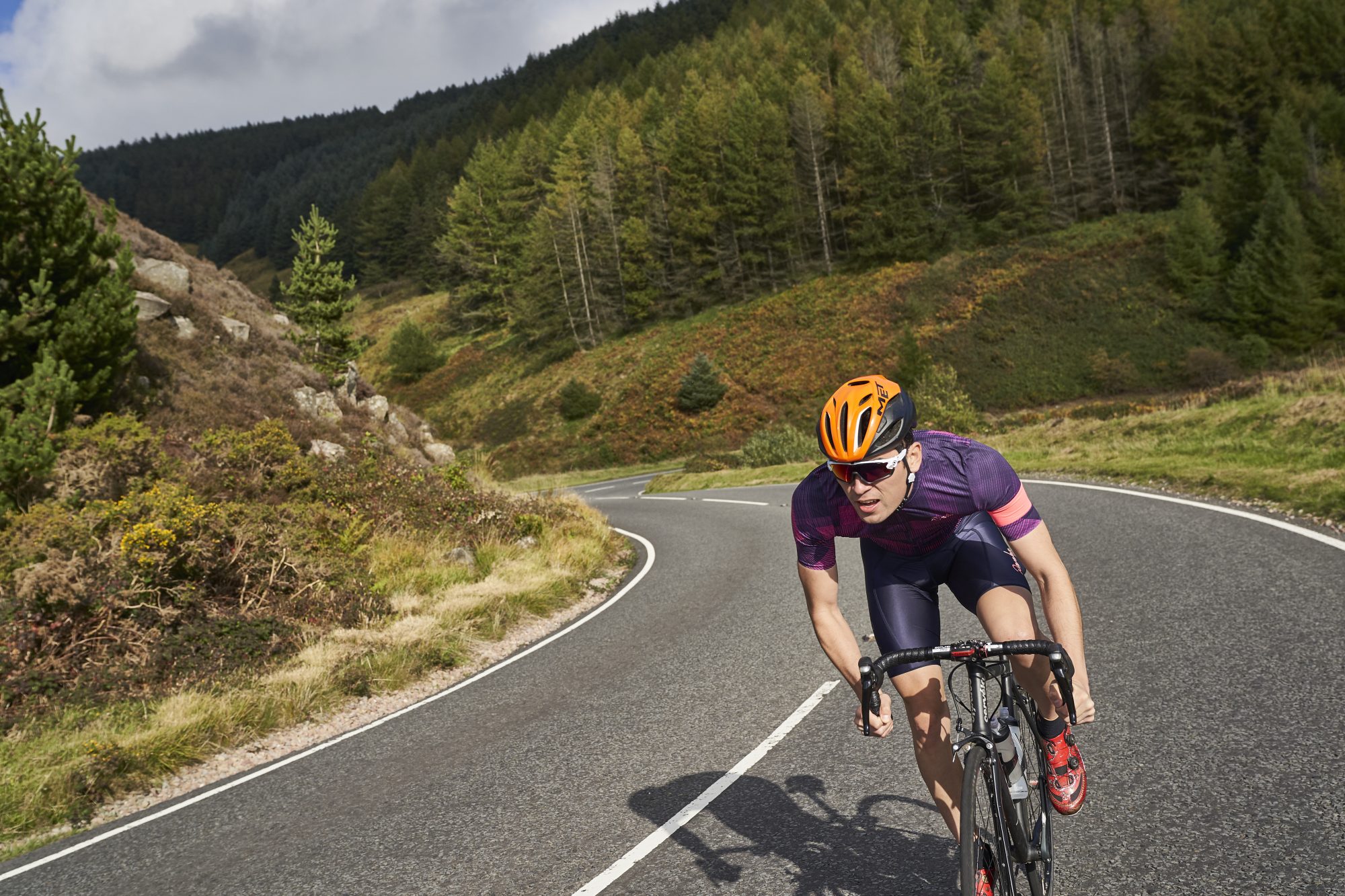

I always like to keep learning. My interests revolve around a few key topics: how to train better to get faster at riding my bike; how to eat better to get faster at riding my bike; how to set my bike up so that I can be faster on it. I know I’m not alone in the pursuit of faster.
>>> How to increase your average speed
However, there are a lot of ‘experts’ out there, always ready with conflicting advice to trip up the unsuspecting speed seeker: from the stranger lurking in the lanes to offer unsolicited bike-fit advice, to the internet forum thread with 50 different answers to the same question.
We’ve filtered out the noise and asked the pioneers, the best and most trusted experts in their respective fields, for their advice to help amateur cyclists get faster.
The strength coach: be consistent in the gym

Scott Pearson, director and coach at Fast Fit Strong, worked with British Cycling in the run up to the Rio Olympics.
We all know that strength training has benefits encompassing injury prevention, improved recovery, and most enticingly, pure performance — but the key message from renowned strength coach Scott Pearson is that you’ve got to keep at it. It was a lesson he hammered home in the lead up to the 2016 Rio Olympics.
“We noticed that after riders on the pursuit squads had gone away on camp or for a competition block, they’d lost a lot of the gains they’d made up to that point,” says Pearson.
Get The Leadout Newsletter
The latest race content, interviews, features, reviews and expert buying guides, direct to your inbox!
It was a simple lack of consistency — even during intense training periods.
>>> How to build a strength training programme for cyclists
“We spoke to the coaches and were able to at least do one session a week, or every 10 days, during the heavy competition blocks. That helped us create a stepping-stone, rather than just an up-and-down cycle. It really made a difference.”
We’re not all Olympic track riders, but Pearson believes that even amateur endurance athletes can benefit from regular and structured gym sessions.
“As an experienced cyclist, to get better at cycling, you need to put an immense amount of work in. As a novice at something, you can get significantly better with very little work. So for a lot of cyclists, the window of opportunity from off-the-bike work is gigantic.”
Pearson suggests riders train in the gym anywhere from one to three times a week, building up gradually and ideally with the guidance of a strength coach. This can be reduced during blocks of racing or increased riding, but you should maintain at least one session to save from losing the gains you’ve made.
He adds: “One misconception is that endurance athletes need to do light weights with lots of reps, to effectively mimic the sport. You need to reframe the thought process and understand that you’re trying to develop the physical qualities needed to develop force, not trying to mirror cycling.”
It’s about functional strength.
“You need to be able to develop the same force quicker than your opponents. To do that, you need to lift relatively heavy weights — above 85 per cent of your one rep max for three to five reps.”
And no, this sort of training is not going to result in a massive weight gain.
“People think they’ll look like Schwarzenegger,” Pearson laughs. “That’s not what happens. The vast majority of athletes I train lose weight after starting gym sessions, their metabolic rate increases and they utilise their fat stores far more efficiently."
Video: strength and conditioning for beginners
Create an 'every week, all year' strength training programme
Create a gym routine that strengthens the lower body, trunk and upper body. Cycling may be a leg-dominant sport, but a strong upper body can protect against injury in a crash and help you hold a more aero position. Include one of each of the below:
- Squatting movement
- Hinging movement (eg Romanian Deadlift)
- Split leg movement (lunge or split squat)
- Trunk training: anti-extension (dead bugs) and anti-rotation (Pallof press)
- Pressing movement (press up/chest press)
- Pulling movement (dumbbell row)
The power guru: ‘Obey your power meter, peak on time’
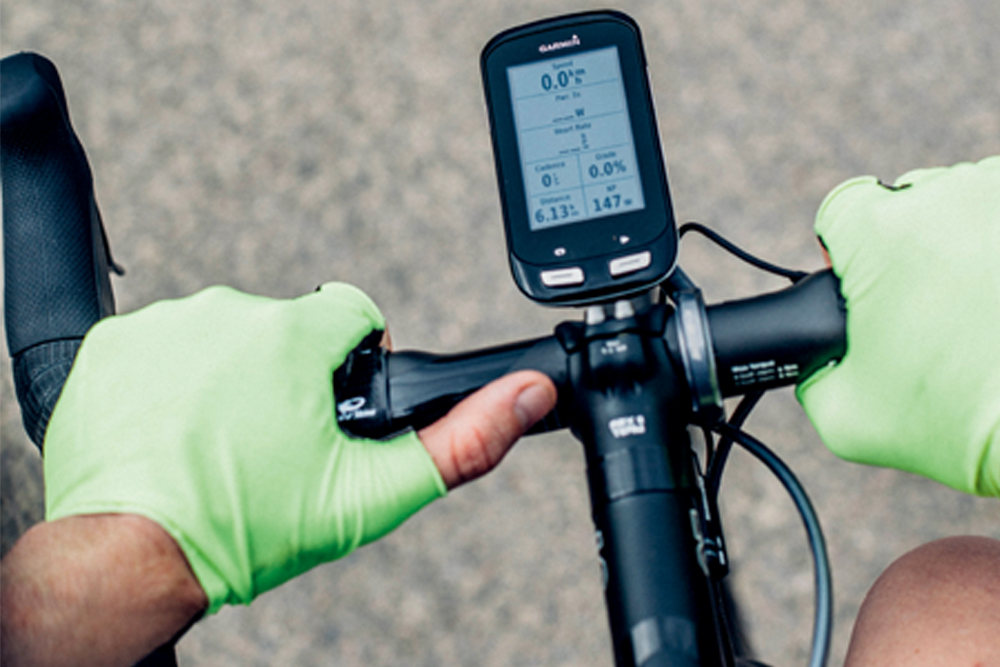
Former US pro Hunter Allen is co-author of Training and Racing with a Power Meter and founder of Training Peaks.
With Andrew Coggan, Hunter Allen created a host of tools to be used alongside a power meter, initially for TrainingPeaks software (replicas are available via other platforms).
Unfortunately, a lot of riders don’t get as far as benefiting from these tools, and only get as far as testing their FTP.
“The ability to analyse the data is really what allows you to track your fitness changes and learn what your strengths and weaknesses are. So, we built all kinds of tools around that,” says Allen. “These bring to the masses the ability to train scientifically, and through a process that is repeatable.”
>>> How to use training software to peak on time
The most useful and perhaps underused tool is the Performance Management Chart, which helps riders hit their peak for a desired event.
“My ultimate idea right from when I got a power meter in 2000 was to periodise a person’s training around their training stress, so I could build their entire training plan around when they will peak,” Allen says.
“Any coach can give an athlete a training plan; they’ll go away and get better. The holy grail is when you can get someone to have the best day of their life for the event they want
to peak for — so that they’re fit, but also fresh. The performance management chart allows athletes to track and correlate peaks of fitness with training stress and fatigue levels.”
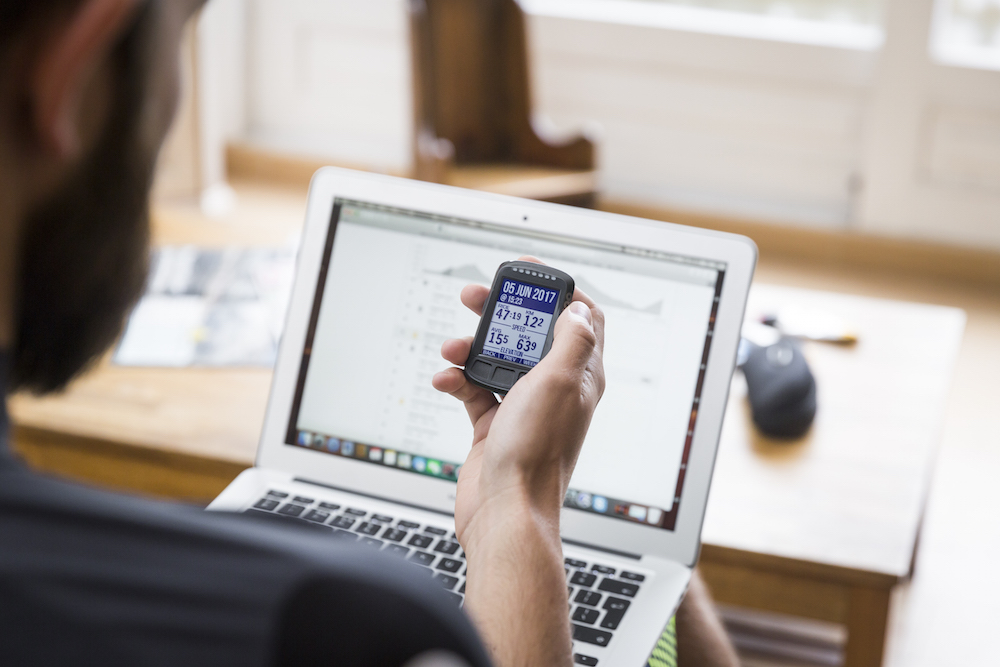
How does the chart work? If you train with power and upload your rides, each one will be awarded a ‘Training Stress Score’ (TSS). An hour at Functional Threshold Power (FTP) would yield a score of 100 — if you get more than 100 TSS an hour, you need a re-test.
>>> How to train with a power meter
‘Chronic Training Load’ (CTL) is how much TSS you’ve accumulated over an extended period. ‘Acute Training Load’ (ATL) is the work over the last seven days — and measures fatigue. Finally, ‘Training Stress Balance’ (TSB) is an equation based on ATL and CTL, which dictates your form going into an event.
So that’s the theory — how does it work in practice? Well, at the end of a recent training week in Denia, Spain, my TSB (form) was -60. I had a race that weekend; had I continued to train hard, I would have arrived in a disastrous state. Using the performance management chart, I was able to plan and track my balance over a taper week, to arrive almost fresh as a daisy, at around +2.
The race itself involved over 60 riders vying for position over countless laps of a 0.84-mile crit course, and poor positioning defeated my best efforts — but I certainly couldn’t blame tired legs for placing outside of the point-scoring top 15.
The golden rules of training with power
Seven steps to using a power meter effectively:
- Start by collecting data from each training session to build up a library of training history
- Complete a Functional Threshold Power test
- Build your training zones around percentages of your FTP
- Test your strengths and weaknesses to understand your power profile, and which areas you need to work on
- Train the areas that you’ve highlighted as targets to improve on
- Download your data from every session to see how you’re progressing
- Correlate the data using the Performance Management Chart to devise a plan that sees you arrive at key events well trained but also fresh
The performance psychologist: rest your mind as you rest your legs

Dr Samuele Marcora, a clinical exercise physiologist turned performance psychologist, teaches at the University of Bologna and the University of Kent.
Having worked with the Mapei pro cycling team in the Nineties, Samuele Marcora has carried out a host of studies looking at the brain’s influence on physical limitation.
“We now know from my studies, and others, that people don’t often reach their physiological limit. A negative perception of effort can hurt you. Fatigue in the brain, it can be very detrimental, as bad as having fatigue in the leg muscles. We have proved that experimentally.”
“If you use psychological manipulation correctly, it can reduce your perception of effort, thus allowing you to push harder, improving your cycling performance.”
In his 2013 study Talking Yourself out of Exhaustion, Marcora found that after two weeks of practising positive self-talk in training, athletes’ time to exhaustion increased on average by a whopping 18 per cent. Participants were given a host of positive phrases to choose from, but were encouraged to select something personal to them. They had to use the phrase when training got tough.
>>> Top tips for rest and recovery after cycling
“It’s something you need to practise in training. It needs to become automatic,” Marcora says, emphasising that emotional fatigue can hamper your chances on race day.
“A lot of people take care of nutrition and taper, but they don’t take care of mental fatigue. You need to make sure you don’t overload yourself mentally and emotionally before a race. Devolve logistics to someone else if you can.”
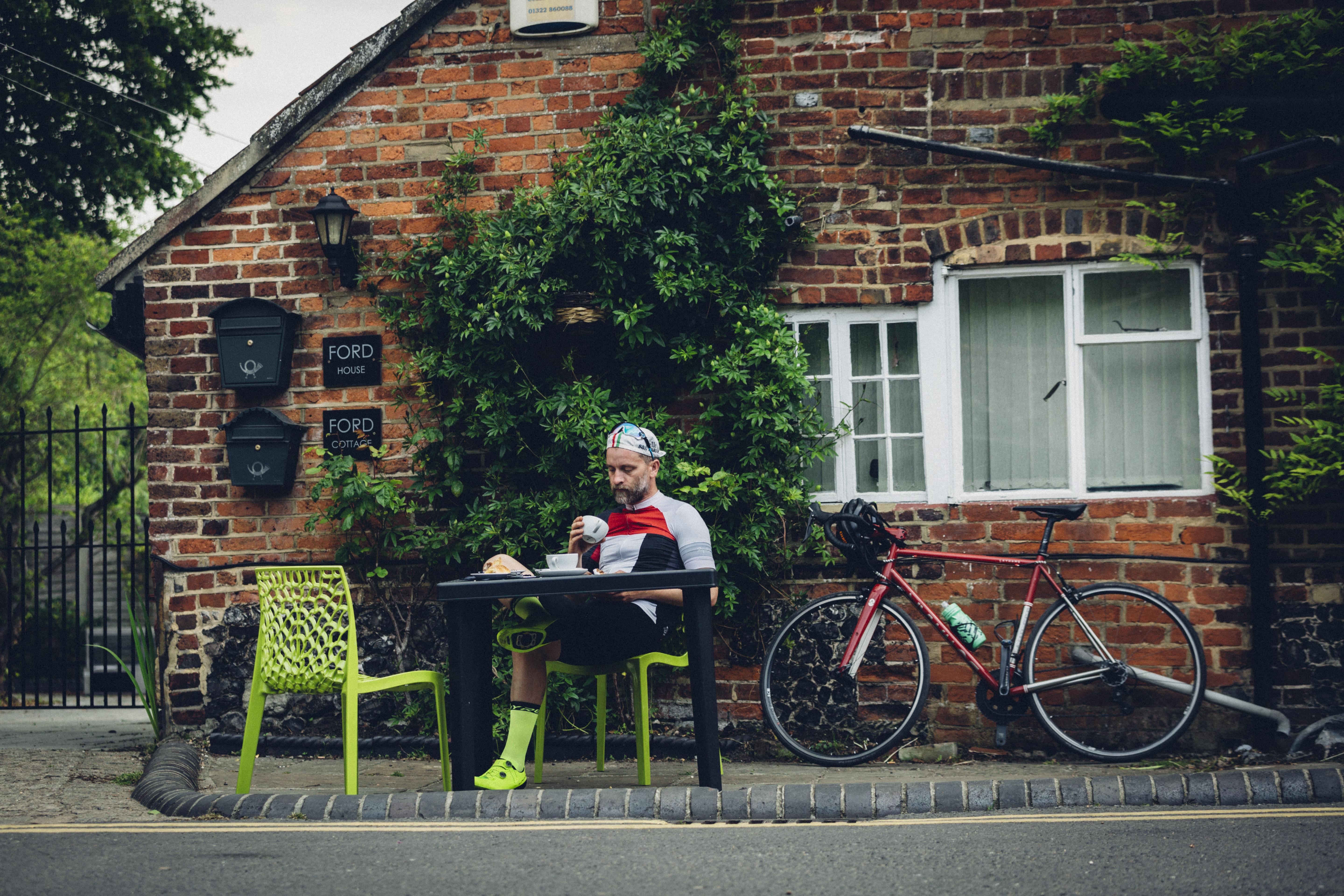
Arguably, there’s a certain circular relationship between body and mind. The brain is responsible for a strong mind, and like strong legs, may be somewhat genetically determined
“Evidence suggests that high-level athletes have better inhibitory control, meaning they’re less likely to give up when things get hard. I reckon the natureto-nurture balance is about 50/50. If you train when it’s cold and wet or you’re tired, you train that ‘inhibitory control’.
Train your brain to downplay strain
Marcora’s top tips on how to reduce perceived effort to get closer to your physiological ceiling:
- Train hard! Being fitter is the best way to reduce perception of effort
- Use positive self-talk in training; it needs to become automatic to be useful
- Practise good sleep hygiene
- Streamline race admin to cut down on mental fatigue
- Use caffeine to reduce perception of effort. Many cyclists use it but in insufficient quantities: 3mg/kg is reasonable, but spread it out and experiment with dosage
The pro team nutritionist: ‘Go back to basics and look after your gut!’

Sam Impey is the lead sports scientist at Mitchelton-Scott and also lectures at Edith Cowen University in Western Australia.
Sam Impey’s PhD research looked into manipulating carbohydrate intake for training gains, developing the popular idea of periodised nutrition — which simply means taking on
more carbs on highintensity training days and less on low-intensity and rest days.
For amateur riders, Impey’s back- to-basics advice echoes what your mum might have told you.
“Fuelling advice needs to be accessible. Try to use real food as often as possible, not just supplements and sports food. That applies both on and off the bike. Go with a food-first approach and just bring in supplements to support those more bespoke requirements, such as gels and sports drinks when intensity is too high for you to be able to chew.”
He is similarly back-to-basics about all the macronutrients.
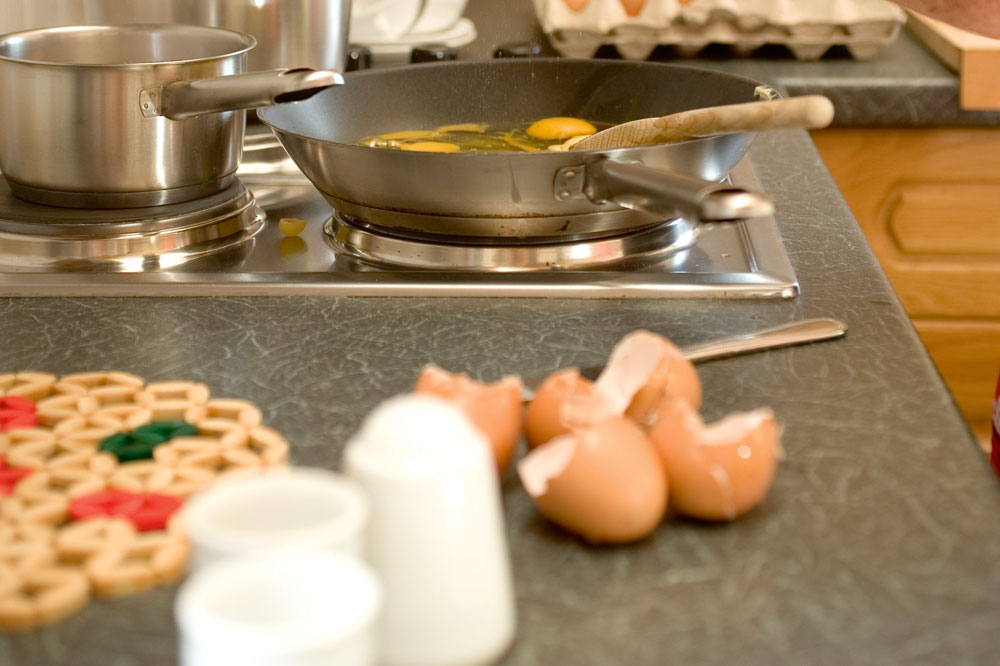
“In terms of protein, our riders usually have a protein shake after a ride as part of a recovery plan, then the rest of their protein intake is predominantly dietary."
It’s too easy to focus on protein and carbohydrate intake while forgetting the central role of digestion, adds Impey.
“Gut health seems to be getting more and more focus. There’s some really interesting work being done up at John Moores [Liverpool University] looking at whether probiotics can potentially increase the uptake and oxidation of exogenous carbohydrates. There’s the potential for probiotics to support good bacteria in your gut to help minimise GI issues, something you don’t want on the bike. I think in the next couple of years it will be a big area to look at.”
Of course, fibre remains a key component in digestion — you should aim for 10-15g per day.
“Dietary fibre is really important to maintain a lot of good bacteria. The thing with supplying only one strain [via a probiotic drink] is that there’s loads of different bacteria in your gut, and you need to support the gut flora as a whole.”
Looking to lose weight?
Here are Sam Impey’s top tips on how to do it safely and sustainably:
- The second law of thermodynamics dictates that if you’re in a calorie deficit, you will lose weight, whatever is on your plate
- Give yourself as much time as possible to reach target weight. Rapid weight loss is not good for an athlete’s general health, never mind their performance
- Aim to lose no more than 0.5kg a week to avoid putting stress on the immune system and risk of RED-S (relative energy deficiency in sport)
The Team GB bike fitter: ‘Better comfort equals faster performances’

Phil Burt was head of physiotherapy at British Cycling before setting up shop at his own eponymous Phil Burt Innovation studio.
The sharp end of Phil Burt’s list of former clients reads like a who’s who of Olympic gold medallists. These days, he’s working with the likes of you and me, from his new base close to Manchester velodrome.
Burt knows more than most about making riders more aerodynamic; it was part of his job for many years. But he recognises that comfort plays a huge role too — and for many of the amateurs he consults, it’s the number-one concern.
“Weight and aerodynamics are what the cycling industry is obsessed with because they want to sell you things,” Burt tells me, “but my research shows that when 2,000 people were interviewed, their number-one concern was comfort. I think there needs to be a readjustment in thinking.”
Comfort can make a big difference at the highest level, as Burt discovered when making custom carbon shoes to fit the feet of Bradley Wiggins ahead of the Rio Olympics.
“You don’t need to worry about the weight of a shoe, but having a shoe that fits you and an insole that takes up space like it should can make a big difference. If we optimise the foot position, we can transfer a lot more power.”
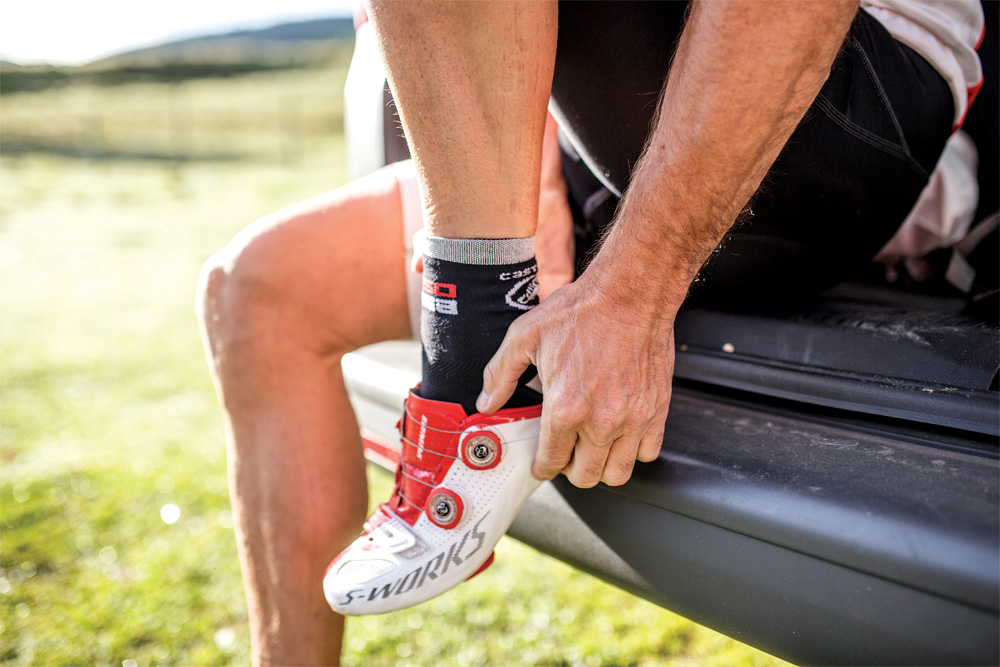
>>> How to choose the saddle for you
The former Team Sky consultant was instrumental in research that helped cut down the incidence of saddle sores among the GB women’s track team, saying: “Its been proven at the top level. If you look at the women before Rio, 100 per cent of our squad had issues. If you’re thinking about saddle pain, it puts you off performing. We made changes and that reduced our incidence of reporting [of saddle sores].”
To illustrate his point, Burt put me on his Retul fitting rig and showed me how my overly narrow saddle was causing me to rotate my hips, throwing my knee angles out of line. A quick sit-bone measurement tool saw my perch swapped for a 168mm model, and the result was nothing short of revolutionary. I’ve no idea if the saddle is more aero or lighter, but I reckon I can pedal harder on it — and that’s no doubt more important.
Spec your bike correctly for you
- Have a bike-fit before you spec your bike; it can save you a lot of money
- Crank length is an oft-overlooked parameter; you don’t have to stick with the status quo or what came on the bike
- Hip width varies from one rider to another, but most of us ride the same stance width. Speedplay pedals are the only brand that lets you significantly change the distance between your feet — check them out if you’re wider than the average rider (i.e. most women)
- Look for a saddle that supports both your body and your riding position
The aerodynamic supremo: going aero offers bigger gains than you think
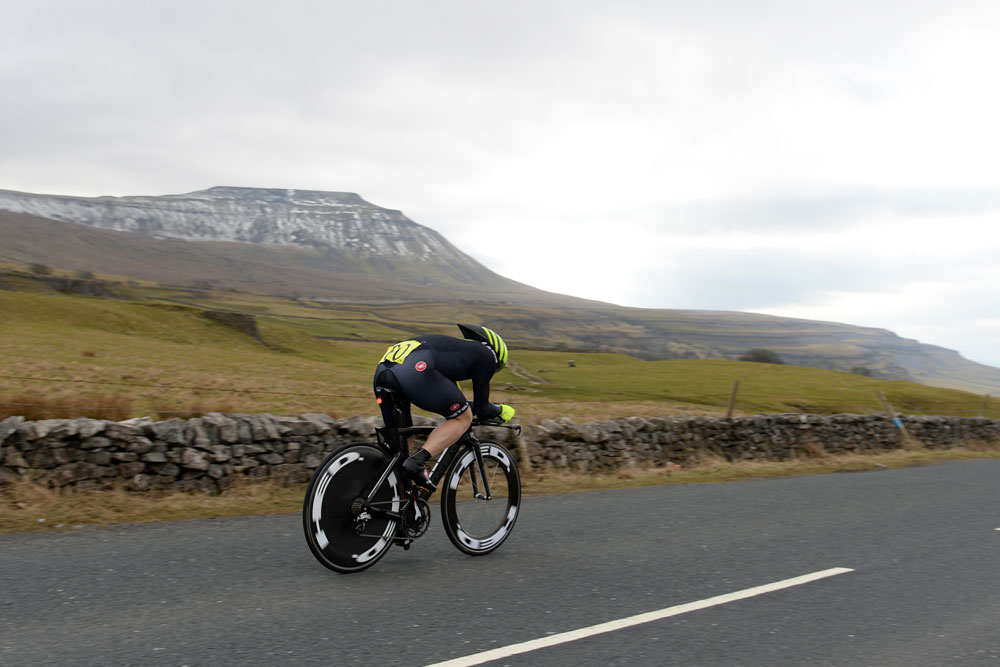
Dan Bigham is best known as one quarter of the World Cup-winning pursuit squad Huub-Wattbike. The motorsport engineering graduate has a fine grasp of the science behind cutting
drag and works tirelessly to optimise the aerodynamics of amateurs as well as pros via his aerodynamics testing and products company, WattShop.
According to Bigham, in five years’ time we’ll be buying our time trial bikes with CdA (drag coefficient) sensors built in, in much the same way power meters are integrated.
“The major thing coming to the fore in the world of aero is the ability for people to measure aerodynamic drag in real time, through on-bike sensors,” says Bigham, referencing brands including Notio Konect and Aero Pod.
“These allow riders to calculate CdA on the open road and play around to their heart’s content with position, skinsuits, wheels and more. It’s starting to pick apart the performance puzzle rather than it being a dark art.”
All of this is still a developing technology. If your bike isn’t yet a bleeping spaceship loaded with CdA sensors, there’s still much else you can do.
“In time trials, improving your position is a no-brainer; your body accounts for around 80 per cent of your aerodynamic drag, so to ignore it would be a pretty naive thing to do — at best. The next biggest gains tend to come from improving the aerodynamics of your helmet and skinsuit.”
Bigham estimates that at 50kph, an aero lid providing a 10-15 watt improvement equates to a 40-second gain over 25 miles. A skinsuit can offer twice that gain.
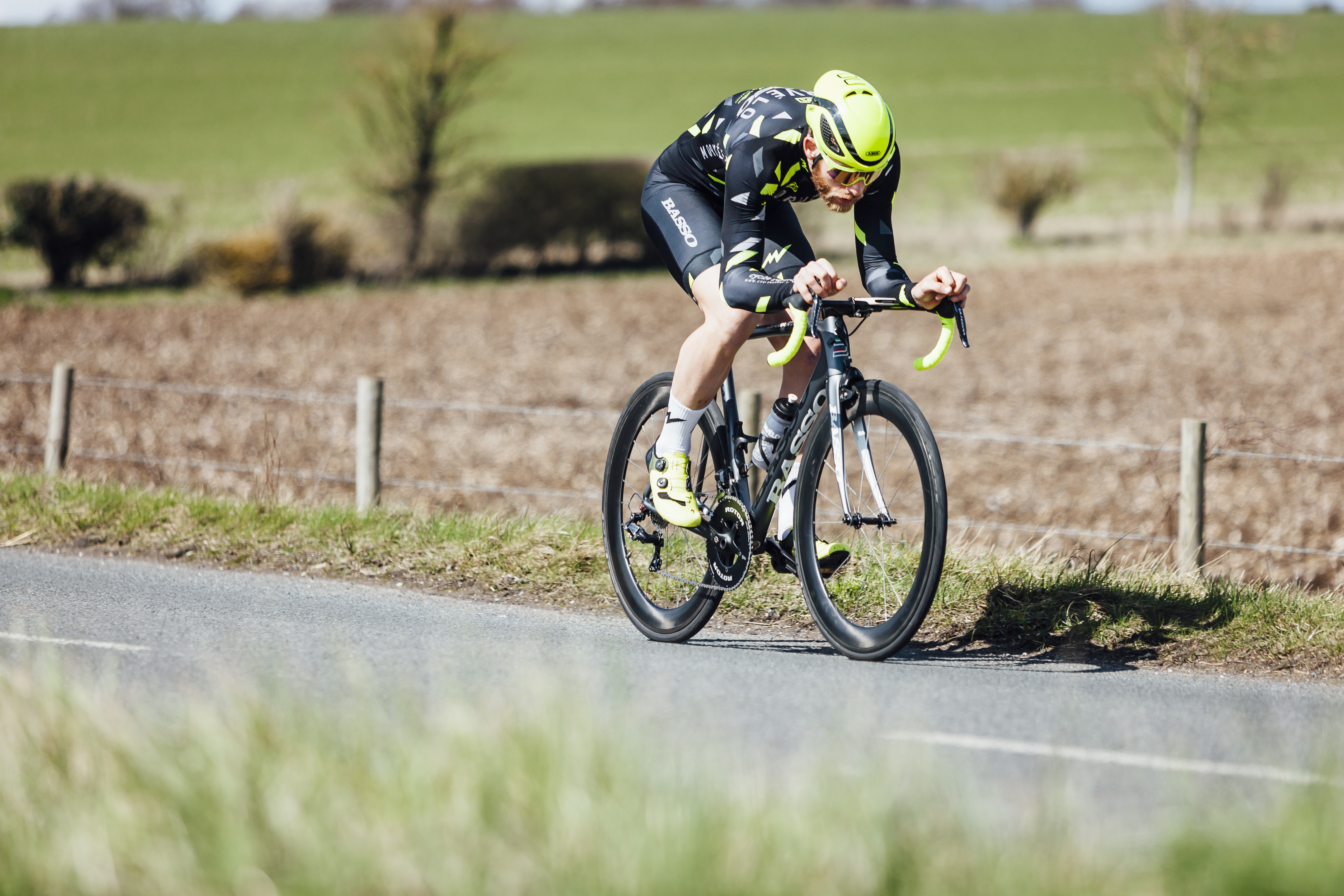
Road racers often overlook aero gains — I know I do — and Bigham sets me straight.
“The difference made by an aero bike is huge — more than people think. Most people save around 20-40 watts when switching from a standard round-tube frame to an aero frame. Even in the peloton, when you’re drafting, you’re saving 10-20 watts — all day, every day, which is a lot of energy.”
Video: how to reduce aerodynamic drag
How to use your CDA numbers
“Speed is what wins races, not aerodynamics. It’s a balance between the two. In the world of flat racing, it’s watts-to-CdA ratio that’s decisive, while if you’re going up a hill it’s watts-to-kilo ratio.
“Once you have a CdA value, as long as you know how tall you are, how much you weigh, and what your power output is, you can compare yourself with other riders. If you’re more aero but your power is lower, you may need to work on power production. If you’re powerful, but not going very quick for it, you need to focus more on the aero side.”
There are new ways of finding your CdA without using a wind tunnel.
The latest is the AeroPod (£449) from Velocomp, which is an ‘opposing force power meter’, meaning it measures the forces acting against a rider. Paired with a direct force power meter — the kind most of us are using — it gives you a real-time CdA number, which you can view using apps on a Bluetooth-enabled phone or Garmin.

Thank you for reading 20 articles this month* Join now for unlimited access
Enjoy your first month for just £1 / $1 / €1
*Read 5 free articles per month without a subscription

Join now for unlimited access
Try first month for just £1 / $1 / €1
Michelle Arthurs-Brennan the Editor of Cycling Weekly website. An NCTJ qualified traditional journalist by trade, Michelle began her career working for local newspapers. She's worked within the cycling industry since 2012, and joined the Cycling Weekly team in 2017, having previously been Editor at Total Women's Cycling. Prior to welcoming her first daughter in 2022, Michelle raced on the road, track, and in time trials, and still rides as much as she can - albeit a fair proportion indoors, for now.
Michelle is on maternity leave from April 2025 until spring 2026.
-
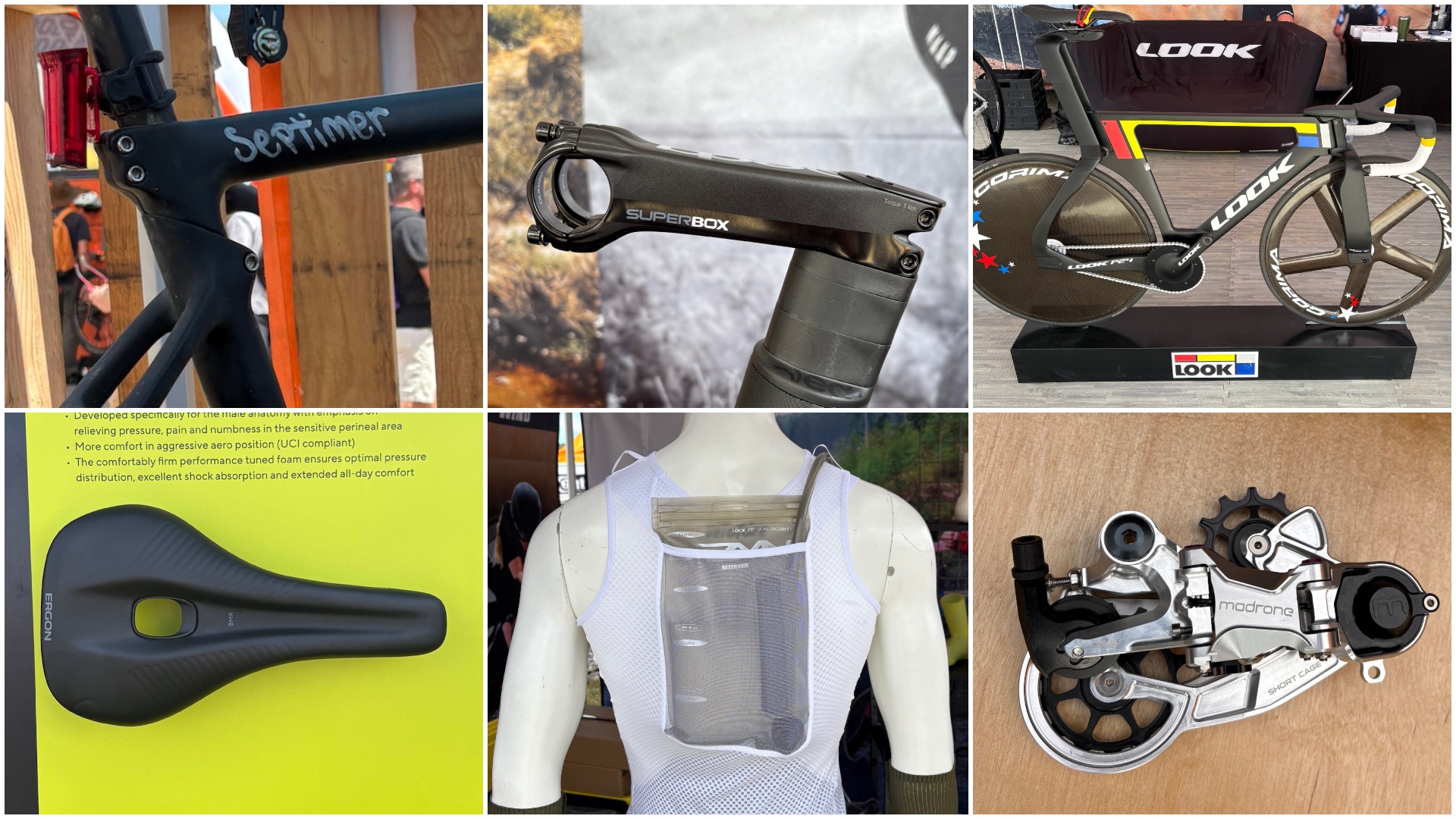 The Sea Otter Classic: sights and sounds from the biggest bike gathering in North America - Part 1
The Sea Otter Classic: sights and sounds from the biggest bike gathering in North America - Part 1Odds and ends that run the gamut, from a $13,000 frameset to armoured kit and new hydro-vests
By Tyler Boucher Published
-
 Deuter's 30ltr commuter backpack
Deuter's 30ltr commuter backpackA rolltop bag to fit a change of clothes and a sandwich. And keep them dry
By Simon Richardson Published